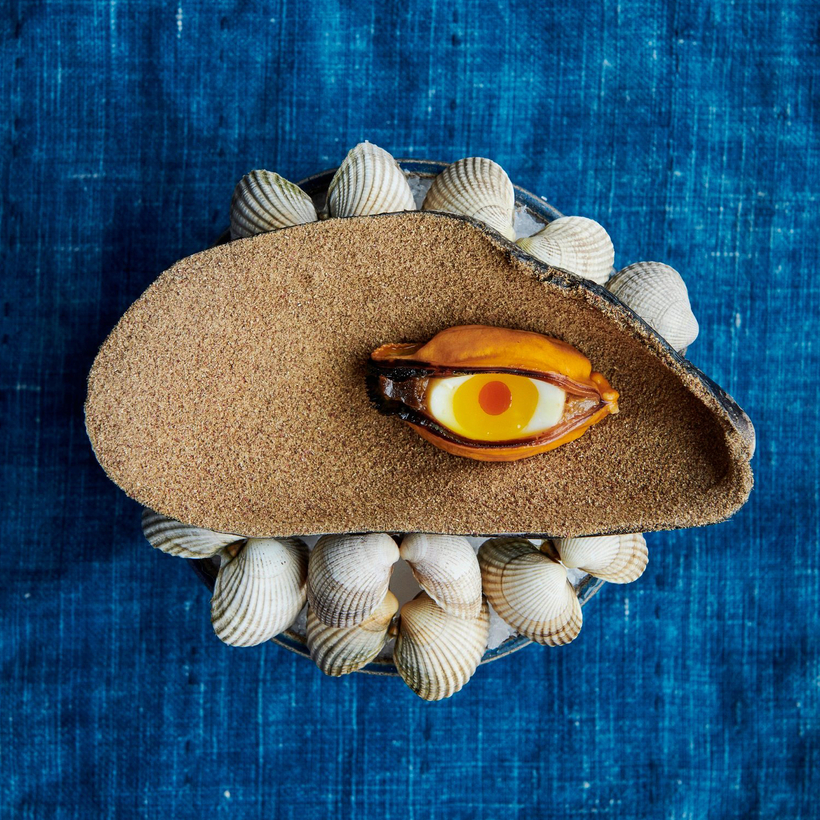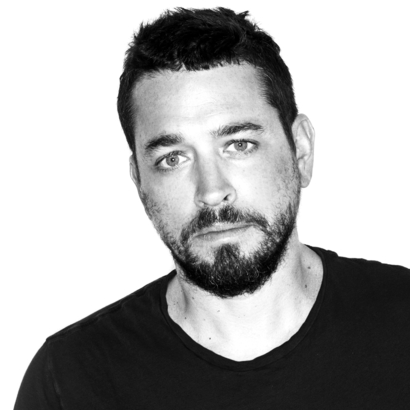I did ayahuasca a few months ago. It was something I’d been curious about for more than a decade, after sending a reporter to Iquitos, Peru—when I was an editor at Vanity Fair—to write about the craze sweeping, if not quite the nation or the world, a specific subset of upscale bohemians who do a lot of yoga and spend an inordinate amount of time in places like Tulum and Costa Rica searching for enlightenment, spiritual transcendence, and meaning.
I don’t know what I was looking for, or if I was looking for anything specific. Sure, I’ve got issues, like everyone else, maybe more, and there is real scientific evidence that some psychotropic and hallucinogenic drugs, including ayahuasca—a concoction made from an Amazonian vine and jungle leaves—can help with anxiety, and depression, and even PTSD.

I’d been told that taking ayahuasca was like a year of therapy in one night. It’s considered a medicine in the Amazonian jungles, where it’s administered by shamans—and shawomen, a word I might have just invented, because I’m trying to be woke—in ancient and elaborate ceremonies. Thanks to the modern world’s dizzying availability of connection and global communication, and the rise of the delivery economy, you don’t have to travel to the jungles of South America to experience ayahuasca anymore. The shaman comes to you.
The first night of my two-night “journey,” lying on a yoga mat in a large candlelit room with about 30 others, was unremarkable. Don’t get me wrong—I was off my tits for four or five hours. Ayahuasca is a strong psychoactive drug. But I always knew where I was, who I was, and what I was doing. I couldn’t get to that talked-about place where you might reach another plane, or leap into another dimension, or attain an elevated level of consciousness, with its accompanying grand visions, that for some adherents unwrap the mysteries of the universe and their place in it.
There was a lot of purging, which is a synonym for a number of other words that would be inelegant to use in a restaurant review, and the purging is considered a vital part of the therapeutic properties of ayahuasca, and this symphony of purge plays on a loop during “ceremonies.” On that first night, in which I took a medium-sized dose of the “medicine,” the contents of my stomach remained in place.
The second night was a different story. Because I decided that Surely I need a much stronger dose to feel the magic. To get too far into the details would delay us further, so I’ll jump to the painful end of the tale: About half an hour in, I knew I’d gone too far. It was terrifying, the jungle juice wreaking havoc on my psyche and body, and the urge to purge overcame me. I somehow stumbled to the bathroom, which is where I unfortunately and hilariously—in retrospect—threw out my lower back while praying to the porcelain gods.
I walked back to my mat like Quasimodo, hunched over at a 90-degree angle, lurching slowly across the floor, trying to make it before collapsing in pain. The next four hours would be spent not in another dimension in existential bliss, but very present, in immeasurable physical pain, as I tried, unsuccessfully, to contort my body into a comfortable position.
I didn’t see God that night, but I did see a chiropractor a few days later.

Like ayahuasca, dining at Copenhagen’s Noma is talked about in spiritual terms. It’s one of the most celebrated restaurants in the world, and has been named the World’s Best Restaurant on all the lists that matter. Opened in 2003 by the Danish chef René Redzepi, it not only put Denmark on the culinary map but re-drew the map’s borders like a postwar cartographer. Noma’s food has been described as a modern twist on Nordic cuisine, its name a portmanteau of the Danish words nordisk (Nordic) and mad (food), sometimes relying on foraging for its dishes, with items like cricket paste, ground ants, and reindeer moss finding their way onto the menu. More than just a restaurant, Noma is a temple for the food-obsessed, talked about like the Beatles’ going to India.
Throughout the restaurant’s history, its reputation has only grown as a destination for the food world’s pilgrims, their Lourdes or Mecca or Western Wall. Recently, on the cusp of its 20th birthday, the Vikings behind Noma decided to grace our shores and pillage our wallets with an appearance in Dumbo, Brooklyn, arriving not by longships but facilitated by the folks at American Express Platinum and the reservation app Resy for a five-night special event for certain American Express card members.
Noma is a temple for the food-obsessed, talked about like the Beatles’ going to India.
In a city emerging from two years of lockdowns and masks and mandates, bone-chilling outdoor dining in subarctic temperatures, and home-cooked meals consisting of a can of beans and a fifth of whiskey, Noma’s arrival was a welcome distraction, part of a symbolic rebirth of things getting back to normal, and the hottest ticket in town.
My ayahuasca journey cost $700 for two nights and two doses of the shaman-administered liquid medicine, which was dark brown and viscous, resembling motor oil, and tasted somewhere between molasses and cat piss. A meal at Noma in Brooklyn was also expected to cost $700, for nine courses, and I hoped the offerings would taste better than the ayahuasca. The meal was to be administered by Noma’s world-renowned chef, although, due to a poorly timed case of the coronavirus, Redzepi was stuck in Copenhagen, sending an apologetic video from his quarantine and an emissary, a Noma veteran of 15 years, in his place. To my surprise, and no doubt the hundreds of other diners who shelled out top dollar for this Noma experience, American Express refunded the full price of the meal to make up for the disappointment of not being in the presence of the world-famous chef.
The similarities between the two experiences may begin with the price, but they don’t end there. Both unfold in a dimly lit room full of strangers seeking enlightenment and fulfillment. Both ayahuasca and Noma rely on the most wonderful and tragic of human thoughts: Belief. Belief in something transcendent outside the Self, a higher power that is bigger than you. Belief makes us see things that may not actually be there. Belief can attach meaning to things that may be meaningless. But if you don’t believe, the magic doesn’t work. And here’s the problem: I’m not a believer. I don’t believe in anything.

With the exception of my own amorphous moral compass, I’m contemptuous of all forms of belief. I am the definition of a skeptic. But humans have an innate desire to believe, to be part of something, literally anything, to latch on to to give their life meaning, and I sometimes think maybe that’s what’s been missing in my own life. I didn’t believe in the plant medicine; therefore, I couldn’t experience its benefits. I need something to believe in. Could that something be Noma?
There is no menu at Noma. High-end and refined dining has done away with choice, re-writing the phrase “the customer is always right” by swapping out the second word for “chef.” At a place like Noma, the chef is the star, the Chosen One, the Shaman. You get what you get, and you don’t get upset. There was nothing to get upset about for the first three courses, which were lined up on the giant counter at the back of the room: aebleskive, a round, doughy Danish pancake with cooked pine needles piled on top like a green toupee, that smelled and tasted like Christmas; fresh and briny Hokkaido sea urchin, from Japan, on a hard, seaweed disk, with a hint of citrus; and a tostada with thin slices of cauliflower that tasted like apple and were dotted with ants. My dining companion didn’t hear the end of the description and in the low light didn’t realize that she had just eaten not one but two generous portions of ants. I’m not sure what the insects added to the dish, but the giggles after telling somebody they had just eaten ants made it worthwhile.
Both ayahuasca and Noma rely on the most wonderful and tragic of human thoughts: Belief.
Once seated, the onslaught of courses four through nine began, beginning with a small bowl of peas resting on a slick of mushroom jelly and blanketed by a spoonful of crème fraiche, the salty stickiness of the jelly and the creaminess of the crème fraiche turning the humble peas into something more than they ever aspired to be. Arriving next was a perfectly rectangular and delicate piece of Dover sole swimming in a sea of cod foam, the first piece of fish to arrive in the seafood-heavy meal. Silky king crab with egg yolk and thick slices of black truffle arrived next, hidden inside the shell of a crab corpse. My favorite dish of the night might have been the cod collar, on a stick, deep-fried in a light beer batter and topped with a generous amount of caviar, as if fish-and-chips and a lollipop had offspring that came into money. The final dish before dessert, and also one of the standouts, was the Maine lobster, out of its shell but displayed on the plate to resemble its natural form, two claws and a tail, deconstructed and reconstructed. It took only one bite to realize that in a lifetime of eating lobster, I’d never once had it cooked properly. It was stunning, and almost jarringly unfamiliar.
That the food was as good, creative, and visually interesting as it was didn’t come as a surprise. There’s a reason Noma is considered the best restaurant in the world by many. But what was surprising was how unpretentious and casual the whole experience was, and how friendly and unfussy our Danish hosts were. The dining room was so unassuming and understated, with simple light-wood tables, that it could have been the cafeteria in a Scandinavian museum or high school. We didn’t have to suffer through endless and dramatic explanations or overwrought speeches about the food, and there were no polemics about some harebrained gastronomical philosophy. While Noma might be a religious experience for some, packed with deeper meaning, it isn’t to the people behind it. They’re not asking anything of you, or for you to believe in anything. They just want to make great food, take care of you for a few hours, and stay out of your way. That’s what great restaurants do. And that’s something to believe in.

Throughout the night, I couldn’t recognize any of the music that was playing softly, but as I was finishing my dessert wine and scraping the sides of the little bowl that had been full of an airy poppy-seed and cardamom mousse, the volume seemed to inch up a little higher. It was the opening drums and bass line of one of the greatest songs ever, Elvis Costello’s “Watching the Detectives.” The perfect finish to the night, like a cigarette after sex, and how every meal should end. Invisible shivers running down my spine.
Dana Brown is a writer and producer and a former deputy editor for Vanity Fair. His memoir, Dilettante: True Tales of Excess, Triumph, and Disaster, is out now


